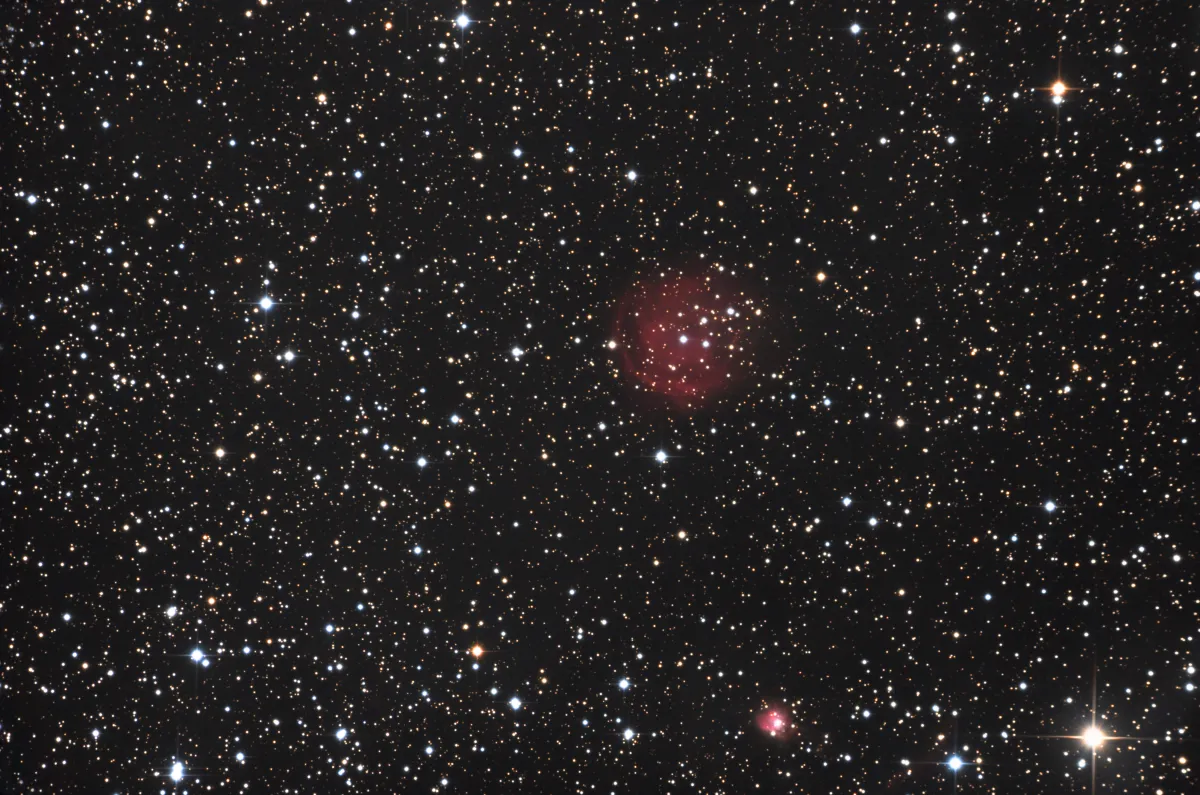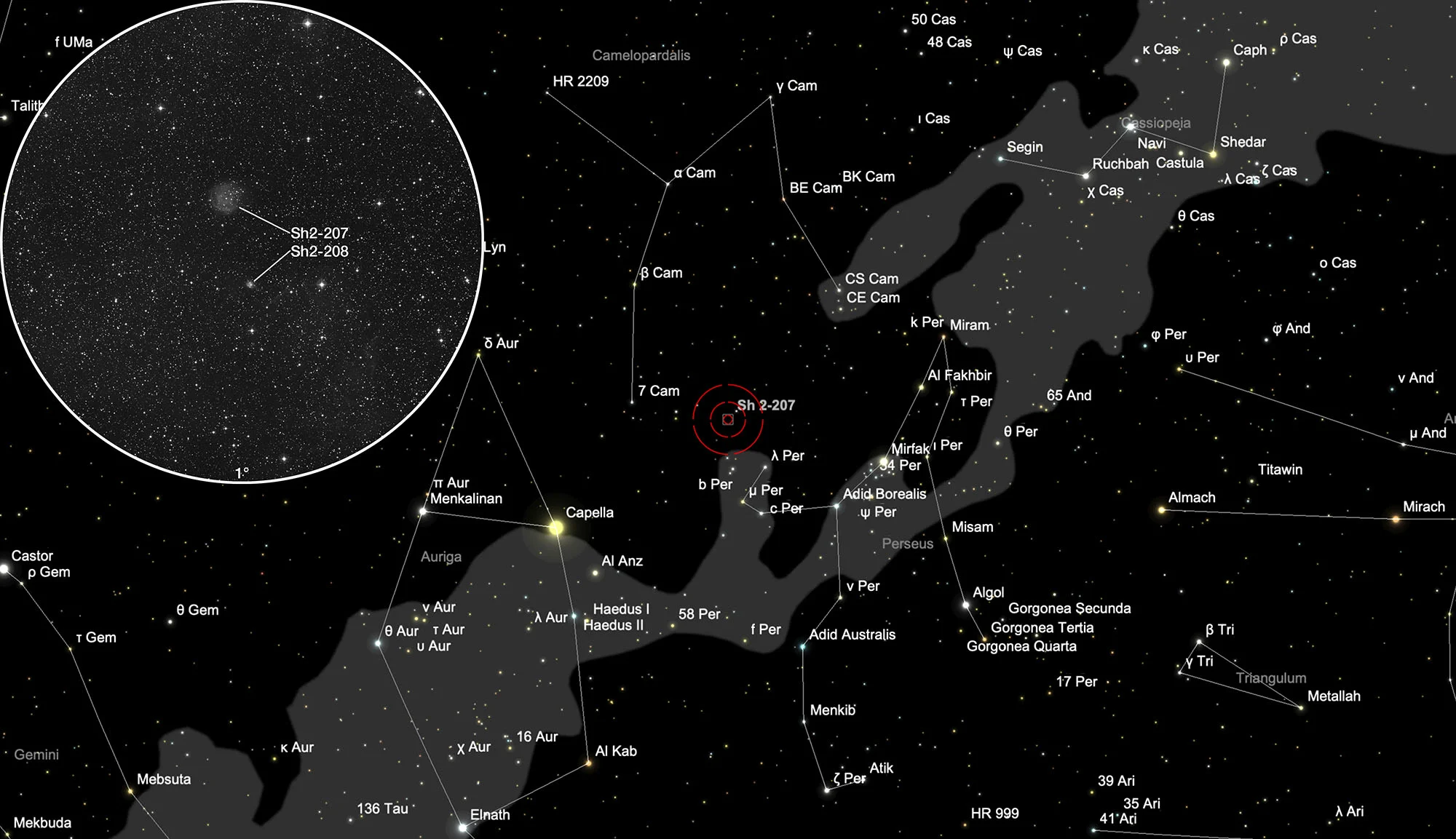Galactic Nebula Sharpless 2-207 & 2-208

History
While searching the photo plates of the «Palomar Observatory Sky Survey» made with the 48 inch Schmidt telescope, the American astronomer Stewart Sharpless came across the two emission nebulae Sh 2-207 and Sh 2-208 and published them in 1959 together with a total of 313 H-II Regions in a catalog. [310]
In 1961 the Soviet astronomer Boris Aleksandrovich Vorontsov-Velyaminov suggested that the faint, round nebula V-V 1-2 (Sh 2-207) could be a typical type IIIb planetary nebula because of the well-defined ring structure. [390] The two Czech astronomers Luboš Perek and Luboš Kohoutek listed the nebula in their «Catalogue of Galactic Planetary Nebulae» published in 1967 under the designation PK 151+2.1. [391] Spectroscopic studies from 1976 showed that Sh 2-207 is more of an H-II region. [392]. In the 2000 reissue it is listed as a misclassified PN and probable H-II region. [146]
Physical Properties
Sharpless 2-207 is a star-forming region, similar to a miniature version of the Rosette Nebula. The age of the star cluster located in the western part of the nebula has been estimated at about 2-3 million years and its kinetic distance at about 4 kpc. [394] The smaller H-II region Sharpless 2-208 is at about the same distance.
| Name | Type | RA (J2000.0) | Dec (J2000.0) | PM [mas/y] | Parall. [mas] | Rvel [km/s] | z | Size ['] | Identifiers |
|---|---|---|---|---|---|---|---|---|---|
| Sh 2-207 | HII | 04h 19m 41s | +53° 08' 31" | 3.333 × 3.333 | 6C 041549+530112; 87GB 041557.7+530215; BWE 0415+5302; CGPSE 170; F3R 4386; GB6 B0415+5302; IRAS 04159+5302; KR 198; LBN 151.25+02.12; LBN 708; MY 041551.5+530832.0; PK 151+02 1; PN ARO 212; PN V-V 1-2; PN VV' 26; RRF 1581; SH 2-207; TGSSADR J041941.0+530831; TXS 0415+530; VLSSr J041941.8+530829; WN B0415.8+5301; WN B0415.8+5301A; WN B0415.8+5301B; [ABB2014] WISE G151.180+02.124; [GS55] 42; [V61] 2 | ||||
| Sh 2-208 | OpC | 04h 18m 46s | +52° 51' 55" | 0.492 | 0.214 | -32.97 | -0.00011 | 2.37 × 1.37 | Cl Waterloo 1; GSC 03719-00517; IRAS 04156+5251; RL 153; SH 2-208; WB89 545; [KPS2012] MWSC 0359 |
Finder Chart
The nebulae Sh 2-207 and Sh 2-208 are located on the border of the constellation Camelopardalis to Perseus. On 29 November it is in opposition to the Sun and culminates at local midnight. The best viewing time is July to April, when the circumpolar constellation is at its highest.
